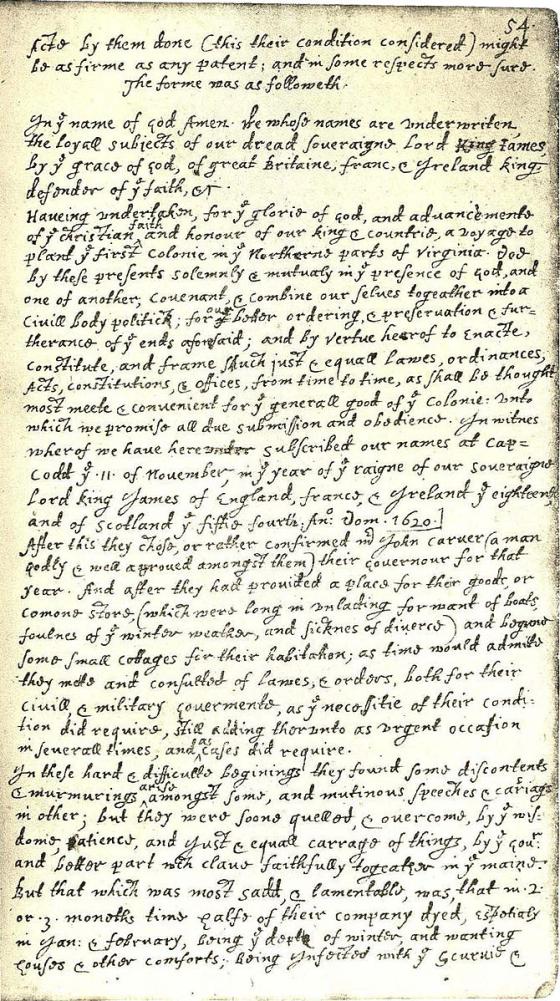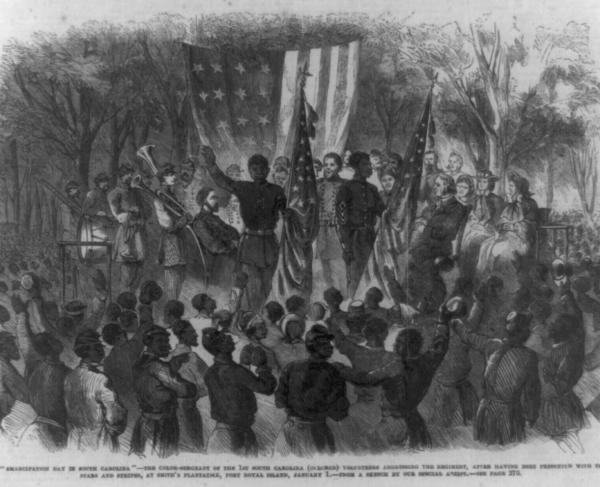The Mayflower Compact

There are few stories about the first few English colonies in North America more well known than that of the Mayflower and the Pilgrims. It’s one just about every elementary school student is familiar with, but the simplified and romanticized story that is most often told tends to hide key details that undermine the true importance of the founding of the colony at Plymouth. One example of this is the story behind the Mayflower Compact, a political compromise between passengers of a journey gone wildly off the rails.

Most people are familiar with the Mayflower itself, a ship that left London in mid-July of 1620 and landed on the coast of Cape Cod in November. Many are also familiar with the Pilgrims who sailed upon it and their purpose in leaving England for the New World; their very name gives some hint as to that. These were religious separatists, calling themselves Puritans, who believed that the Church of England established by King Henry VIII did not adhere closely enough to the principles of the Protestant Reformation and so sought to form their own community instead. North America was actually their second choice. Three years earlier they had moved from England to Leiden, a city in the Dutch Republic, but that project had failed for a number of reasons. For one, the Puritans were hesitant to assimilate into Dutch society which meant they naturally ran into a language barrier with their new neighbors, and despite the fact that the Dutch Church was more closely aligned with their own beliefs, they found Dutch secular society too libertine and materialistic for their approval. It was also in the middle of a war of independence with Spain. By contrast, North America was seen as totally empty and remote, a fitting place to forge a new community following their own strict interpretation of Christianity, so the Separatists forged a contract with the Virginia Company and made preparations to sail for their new home.
One important fact to keep in mind, however, is, as the name Virginia Company suggests, Virginia was the original destination of the Mayflower. The second is that, though the Separatists commissioned and led the Mayflower Voyage, they only constituted a bit more than a third of all passengers. The majority, referred to as “Strangers” by the Pilgrims, were simply adventurers, craftsmen, merchants, and other tradespeople hired to accompany them, as well as indentured servants. This proved incredibly consequential because as the Atlantic weather blew the Mayflower completely off course, landing them hundreds of miles north of their destination, the “Strangers” nearly mutinied. As the Separatists were unwilling to sail back to Virginia, an impossibility given the lack of supplies at this point, they argued that the original charter no longer applied to them. If order was not restored quickly, the new colony likely faced disaster, and so seeing that the situation had to be resolved quickly, the free adult men who made the voyage quickly negotiated and signed a pact, later called the Mayflower Compact. In it, they agreed to “combine ourselves together into a civil body politic” and build their new Christian society in this new destination, just as they had promised for the previously agreed-upon Virginia. It is not quite known who led these negotiations, but Separatist John Carver is often credited with writing the document, and judging by which signers of the Compact took on major leadership positions in Plymouth Colony, it is likely that William Brewster, William Bradshaw, and Edward Winslow spoke up on behalf of the Separatists, while hired English army officer Myles Standish spoke up for the Strangers.
Though at the surface, this incident may seem more like a historical footnote, in fact, the Compact represented the first instance in which a group of English colonists founded a new community organized by along lines they themselves defined, rather than by a company charter as was the case in Jamestown. This became even more apparent as the colony continued to grow and the colonists continued to create more local institutions to improve administration, including a General Court that became one of the first examples of representative government in British North America. This essentially makes the Mayflower Compact one of the first acts of self-rule for the English Colonies.
Further Reading
- Signers of the Mayflower Compact By: Annie Arnoux Haxtun
- The World of Plymouth Plantation By: Carla Gardina Pestana
- The Journey to the Mayflower: God's Outlaws and the Invention of Freedom By: Stephen Tomkins
- They Knew They Were Pilgrims: Plymouth Colony and the Contest for American Liberty By: John G. Turner


